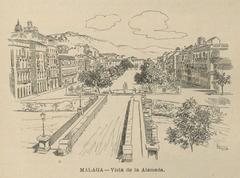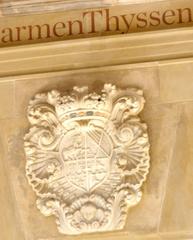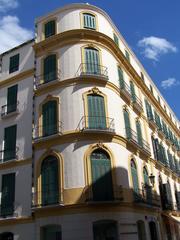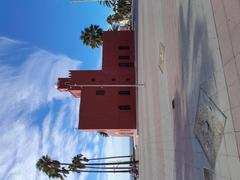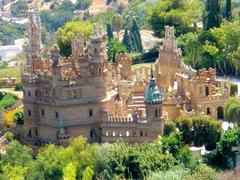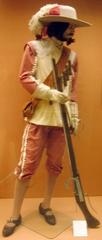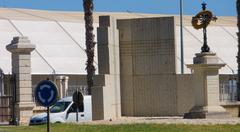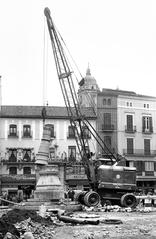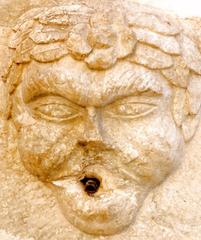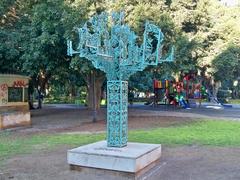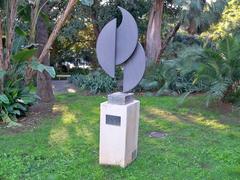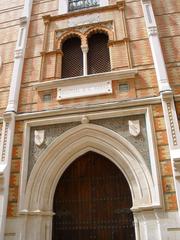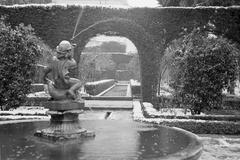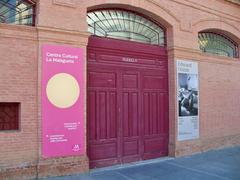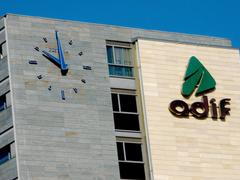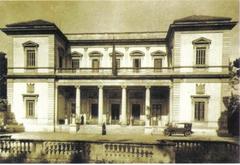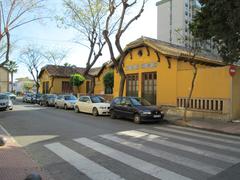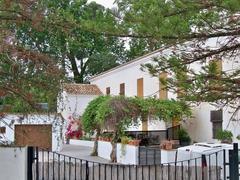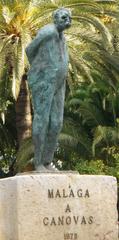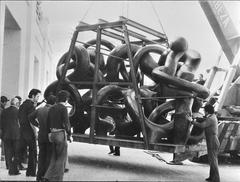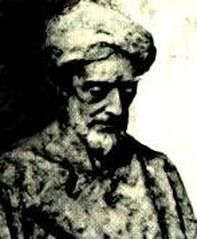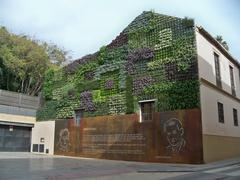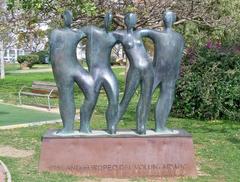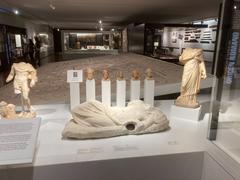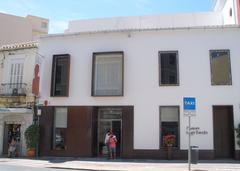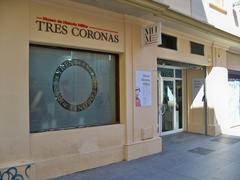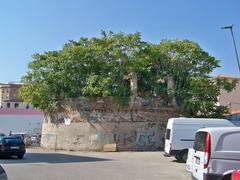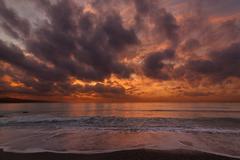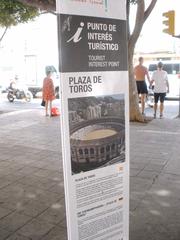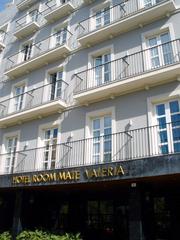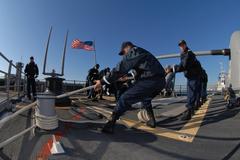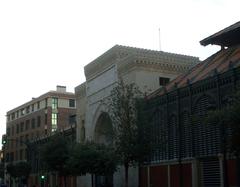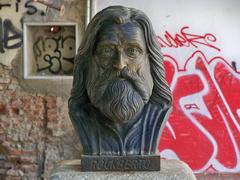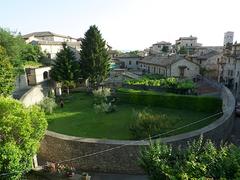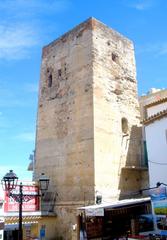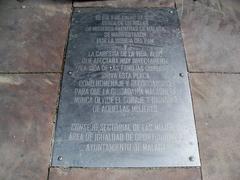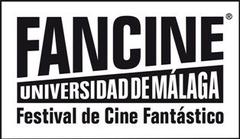Visiting the Monument to Francisco García Grana in Málaga, Spain: Tickets, Hours, and Tips
Date: 14/06/2025
Introduction
Málaga, famed for its historical depth and cultural vibrancy, offers visitors a wealth of landmarks that tell the story of its evolution. Among these is the Monument to Francisco García Grana—an emblematic tribute to one of the city’s most influential mayors. Located in Plaza de la Marina and along the Paseo de la Farola, the monument honors García Grana’s transformative leadership during the mid-20th century and reflects Málaga’s ongoing journey of urban renewal and civic pride. This guide provides in-depth historical context, explores the artistic vision behind the monument, and delivers essential visitor information, including access details, accessibility, nearby attractions, and practical tips for making the most of your trip.
For further exploration, consult resources such as La Opinión de Málaga, Gibralfaro UMA, and Spain.info.
Historical Background and Legacy of Francisco García Grana
Early Life and Family Heritage
Born on December 31, 1913, Francisco García Grana was raised in a family deeply engaged in public service—his father having served as mayor during the turbulent years of the Guerra de Melilla (La Opinión de Málaga). García Grana’s education at Colegio de San Agustín and later at the University of Granada, where he obtained a law degree, laid a solid foundation for his dual career in law and public administration.
Political Career and Mayoral Tenure
Assuming the mayoralty on September 11, 1958, García Grana led Málaga through a significant period of economic growth and cultural revitalization. His administration prioritized urban renewal, notably the transformation of Calle Marqués de Larios and the development of key cultural sites such as Auditorio Eduardo Ocón. García Grana also addressed social needs by relocating flood-affected communities and promoting education, notably establishing Málaga’s first Faculty of Political, Economic, and Social Sciences (Wikipedia).
Civic and Social Engagement
Beyond city governance, García Grana contributed to Málaga’s broader civic life. He served as dean of the Málaga Bar Association and as director of C.D. Málaga during its ascent to Spain’s top football division, reinforcing his commitment to both legal excellence and community spirit (La Opinión de Málaga).
Legacy and Recognition
Celebrated as “Hijo Predilecto de Málaga” and awarded the city’s Gold Medal, García Grana’s legacy endures in Málaga’s collective memory. After his passing in 2000, a bronze bust by sculptor Jaime Pimentel was installed in 2002 at Plaza de la Marina—a symbolic space reinvigorated during his tenure (Minube).
Visiting the Monument to Francisco García Grana
Location
The monument is prominently situated in Plaza de la Marina, one of Málaga’s central squares, facing the Diputación building. The area is a focal point of local activity and is within easy walking distance of other major sites such as Málaga Cathedral and Calle Larios.
Opening Hours and Tickets
- Hours: Open 24/7 as it is installed in a public space.
- Admission: Free of charge. No tickets are required.
Accessibility
Plaza de la Marina and the surrounding promenades are wheelchair accessible, with smooth, paved surfaces and ramps. Public transport options, including city buses and taxis, offer accessible routes to the area.
How to Get There
- By Bus: Numerous city bus lines stop at or near Plaza de la Marina.
- By Metro: The closest station is Alameda Principal.
- On Foot: The monument is easily accessible from the city center and popular tourist routes.
Nearby Attractions
Explore these sites within walking distance:
- Calle Marqués de Larios: Premier shopping and pedestrian street.
- Auditorio Eduardo Ocón: Cultural events venue.
- Picasso Museum: Celebrating Málaga’s most famous artist.
- Málaga Cathedral: Renowned for its architectural grandeur.
- La Alcazaba and Roman Theatre: Ancient sites offering panoramic views (The Crazy Tourist), (Wide World Trips).
Guided Tours and Events
While the monument does not have dedicated tours, it is often featured in city walking tours that cover Málaga’s historical and artistic highlights. During festivals such as Feria de Málaga and Semana Santa, the area around the monument becomes a hub of activity and celebration.
Photographic Tips
- Best Lighting: Early morning or late afternoon provides the softest natural light.
- Angles: Capture the monument with the Diputación building or port in the background.
- Festive Seasons: During city festivals, the monument area is adorned and especially photogenic.
Artistic Vision and Symbolic Elements
The Cenachero and Biznaguero Sculptures
Commissioned during García Grana’s mayoral term, the “Cenachero” and “Biznaguero” bronzes by Jaime Fernández Pimentel have become enduring symbols of Málaga’s identity (Gibralfaro UMA). The Cenachero, a fish seller carrying woven baskets, embodies the city’s maritime tradition and working-class spirit. The Biznaguero, a seller of jasmine bouquets, represents hospitality and craftsmanship.
These sculptures, located along the Paseo de la Farola and in Plaza de la Marina, are beloved by residents and visitors, encapsulating Málaga’s blend of tradition and modernity. Both are freely accessible and are popular stops on guided city tours (Spain.info).
Cultural and Civic Importance
The monument is not only a tribute to a transformative mayor but also a reflection of Málaga’s civic values—resilience, unity, and the blending of secular and religious traditions. García Grana’s leadership during a pivotal era is commemorated through public art, serving as an educational touchstone and a focal point for community gatherings, especially during significant city festivities (Diario Sur), (The Travel Blogs).
Practical Tips and Visitor Amenities
- Best Time to Visit: Early morning or late afternoon for optimal lighting and fewer crowds.
- Amenities: Benches, landscaped gardens, and nearby cafés.
- Interpretive Materials: Information plaques in Spanish and English.
- Safety: The area is generally safe, but standard urban precautions apply.
- Facilities: Public restrooms and free Wi-Fi are available nearby.
Frequently Asked Questions (FAQ)
Q: Are tickets required?
A: No, the monument is in a public area and is free to access at all times.
Q: Is the site accessible for people with disabilities?
A: Yes, the area is wheelchair accessible.
Q: Are guided tours available?
A: Many city walking tours include the monument as a highlight.
Q: What are the best nearby attractions to combine with a visit?
A: Málaga Cathedral, Calle Larios, La Alcazaba, Picasso Museum, Roman Theatre, and Muelle Uno.
Events and Community Engagement
The monument serves as a gathering point for commemorative events, especially on dates significant to García Grana’s legacy or Málaga’s civic calendar. During festivals such as Semana Santa and Feria de Agosto, the area is decorated and integrated into the city’s celebrations, offering visitors a chance to experience local traditions firsthand (The Crazy Tourist).
Conclusion
The Monument to Francisco García Grana is a powerful emblem of Málaga’s modern transformation and community spirit. Its central location, free and open access, and proximity to other major attractions make it an essential stop for any visitor interested in the city’s history and culture. By exploring the monument and its surroundings, you’ll gain a deeper appreciation for the enduring legacy of one of Málaga’s most beloved leaders, as well as the city’s rich artistic and civic heritage.
For more tips and resources, consider downloading the Audiala app and exploring official tourism channels for the latest updates and guided tour offerings.
Sources and Further Reading
- La Opinión de Málaga
- Gibralfaro UMA
- Diario Sur
- The Crazy Tourist
- Spain.info
- Wanderlust Chloe
- Wide World Trips
- Minube
- The Travel Blogs
Map and Virtual Tour of Plaza de la Marina
